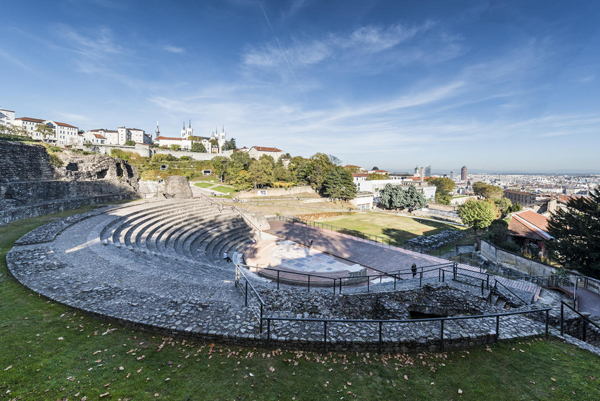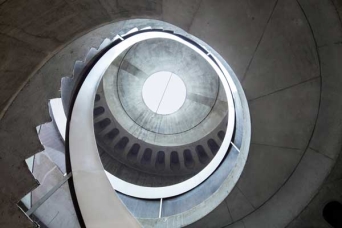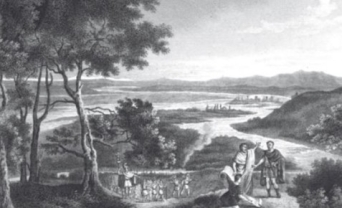These two buildings, located side by side, formed a unique set in the Roman world. Transformed into quarries in late Antiquity, they had almost disappeared from the landscape. They were updated and partially rebuilt during the first half of the twentieth century.
As living monuments, they welcome the "Nuits de Fourvière" shows each summer.
The theater
Also known as the "large theater", to differentiate it from the odeon, the building is set into the slope of the hill. It is the oldest theater in Roman Gaul and is also one of the largest (108 meters in diameter), along with the theaters of Vienne and Autun.
Originally, there were only two levels of tiered seats for about 5,000 spectators. Later, it was modified: the stage was rebuilt, and a third level of seats was added, enlarging capacity to 10,000 spectators. Plays were presented there, most often comedies, accompanied by dances.
The odeon
The odeon is the smaller theater, which was designed for concerts and declamations. It could also be used as a meeting room. Odeons were rare in the western part of the Empire. Only Lyon, Vienne and Valence had them.
There were originally two levels of tiered seats that could hold up to 3,000 spectators. At the foot of the seats, the magnificent orchestra pavement was made of the most beautifully colored marbles of the Roman world, including green porphyry from Greece, red porphyry and granite, from Egypt, yellow marble from Africa and purple and red marble from Asia Minor.
Like the theater, the odeon became a quarry after it was abandoned, but its ruins remained visible.
6 rue de l'Antiquaille / 17 rue Cléberg. Open access





